
Kristin Fouquet is a brilliant photographer. If my opinion is worth anything in years to come her understated brilliance will be widely recognised. She is in total command of the camera because she lets each picture tell its story. There is a remarkable absence of control in her photography and a pure sense of beauty that is erotic in its balancing of colour and shadow. She has an artist’s eye and deep understanding of imagery and the way it taps into the subconscious. She is one of the most stunning photographers around. She inherits a deep tradition which she has evolved into her own style. She is also a vividly engaging and evocative writer. Her book ‘Twenty Stories’ is available here. She met me at The Slaughterhouse and we spoke about art and the fragility of the moment.
Scroll down for more links to Kristin’s work.
While you do use colour, you are well known for your stunning and imaginative black and white photography, in which the influences of Henri Cartier-Bresson and Man Ray are evident. Do you consider black and white a more effective medium for certain visual representations and if so why?
Thank you for your interest in my photography. You’re right, I was definitely influenced by them; they’re true masters. I found it painfully disappointing when Cartier-Bresson lost all interest in photography, dismissing the photograph as an “instant drawing.” Perhaps, he found it came too easily for him and wanted the challenge of drawing again. When I think of street photography, I think of Cartier-Bresson. I adore Man Ray’s surrealistic portraits. Of course, he also had the advantage of beautiful subjects like his lover Kiki and later Lee Miller. In his conceptual photographs, I think of him as an architect, constructing his shots.
I can’t speak for all visual representations and certainly color photography has its place, but my instinct has always been black and white. Long before I owned a camera, I spent many childhood hours staring into mirrors. This wasn’t an act of narcissism because I was rarely looking at my own reflection. I would tilt my head or move around a hand-held mirror to view a room from different angles. These perspectives revealed minutiae: a small box or a figurine on a table, things which may have gone unnoticed. With the ability to segment or crop with a mirror, my environment became more interesting. I think this hobby of my youth is why I was attracted to photography in general and especially black and white. Monochrome forces the mind to see the world differently. Similar to Film Noir, black and white photography sets a mood; it enhances texture, shadow, and depth that I do not see in color.
Alhazen invented the first camera obscura in the Middle Ages, which has had a great influence on the development of art as well as photography. What do you think the visual effects of a camera obscura are and how do these differ from other techniques of visual representation?
Well, first I feel compelled to defend photography as art. Obviously, not all photographs are art; some are just snapshots or pictures. In its infancy, photography was met with some resistance from the art world. Many painters felt threatened by a new medium for portraiture. Yet, photography aided the art of painting and this can initially be seen in the early use of the camera obscura.
I had heard the term before and tinkered with pinhole cameras, but it wasn’t until 2001 that I really appreciated its simple brilliance. While in San Francisco, I visited the “Giant Camera,” a camera obscura constructed outside of the Cliff House. Inside the small building, I was amazed by the images of the Seal Rock area magnified on the parabolic screen. Producing this visual effect must have been a most valuable tool for drawing. The advantage of tracing the projection would have sped up the duration of portrait sittings. I cannot estimate its significance for art in general nor the extent of the influence on the artists, such as Vermeer and Caravaggio, who used the camera obscura. As for the history of photography, it was the archetype for all modern cameras and therefore invaluable.
Of course photography is art. Caravaggio used street characters for his paintings. The best photography is natural and unstaged. How do you draw on the everyday characters you see around in your work and what kinds of juxtapositions of images do you like to use for your effects?
I sometimes compare taking photographs to fishing. The best shot being the “catch of the day.” I feel street photography is closer to hunting. You must stalk your subjects, hoping they don’t discover you. I believe once a person realizes he or she is being photographed, it ceases being pure street photography and becomes street portraiture. My favorite photographer of street portraits is Diane Arbus. Yet, if we’re talking about the best photography being natural and unstaged, this would not fall in the same category because even smiling at the camera is staged.
So, for street photography, timing is key. When I’m walking I hold my camera at different inconspicuous angles as to sneak in my shots. I often shoot from the car. One day I was driving down Rampart St. here in New Orleans where I saw a man riding a tandem bicycle alone and yelling over his shoulder to another man. Well, I’ve been told you make art because you have to and this is a good example. At the time, I was a bit miffed, aggravated with myself because I knew I had to turn around and get the shot. I was feeling lazy, but I made the U-turn and stopped the car in the middle of Rampart St., rolled down the window, and got it. I’m so pleased with the results. I’ve titled the photograph simply “Tandem” and it among some other photos of mine are being published in Boneshaker: a Bicycling Almanac. This is also a great example of the kind of street photos I like- one person reacting to another or to a group. I do very little tweaking of these photographs, maybe just an adjustment of contrast levels. I prefer to keep them simple black and white images.
New Orleans is steeped in the history of Gris Gris and Jazz. How do these two parts of life there bear on your photography?
There is a mystique about New Orleans which is not easily explained. In my youth, I found the stories of Marie Laveau, the Voodoo Queen of New Orleans, alluring. I read of her methods for persuasion, the same ones her daughter, Marie, perpetuated. This legacy confused many who believed the two women were the same, powerful and ageless one. Through these stories, I gained an appreciation for my historic city as a mysterious place. Although I embrace this aspect of my culture and attribute some of my darker imagery to it, I’m not superstitious and I don’t believe in voodoo.
I do, however, believe in jazz. It’s what I’m listening to most of the time. My first musical love is traditional jazz, but I adore most forms of jazz and have a soft spot for female vocalists. I’m fortunate to live in a city rich with jazz talent and the opportunity to capture it. Live music is played every night of the week here. There’s music on the street and some of my favorite clubs are on Frenchmen Street in the Faubourg Marigny. As you may have seen in my “Musicians” series, I enjoy photographing players at all stages of their careers and styles of music. The street musician is just as interesting to me as the brass band or the torch singer.
What do crows and skeletons represent in your photography and when you take a photograph is there a particular moment you are looking for that captures the interworld feeling you portray?
Dark birds captivate my imagination with their beauty and mystery. Crows are omnivorous and will eat almost anything, including carrion and trash. They are also intelligent, able to problem solve and mimic the sounds of other birds and animals. I admire their cunning and adaptability. I try to photograph them as much as possible. When I do capture them with the camera, I feel I’m a little closer to understanding them. I was also an early contributor to Full of Crow created by Lynn Alexander. I composed the photograph “Two Birds” for her, which she renamed “Two Crows” and uses as the main page for the site.
Bone Men are a Mardi Gras tradition. They masquerade as skeletons making their way through older neighborhoods, banging on doors and rattling shutters to wake the inhabitants and encourage them to join the revelry. They begin at the cemetery early in the morning because they are supposed to be vehicles for the spirits throughout the day. I adore the concept and feel fortunate if I see them. Aside from costuming, skeletons remind the living that we are mere bones beneath the flesh; we do not even own our bodies. Death is coming for all of us, giving value to life.
I think all photographers are seeking that moment when you get the shot. Often for me, it feels like serendipity- as if I had nothing to do with it. Sometimes you get lucky; other times you have to work for it. I follow my eye and my emotions, what I call my instinct. When it happens, the moment, it’s pure elation.
There is much of the burlesque in your imagery. Do you consider yourself an erotic photographer at all?
I do enjoy the playfulness, the comic tease of burlesque. It’s flirtation. This does show itself in some of my photographs. There are actually a few burlesque troupes in this city, but they are being well documented by other photographers, so I don’t seek them out to shoot. Tim Hall invited me to do a monthly photo column, “Intimates by Kristin Fouquet,” for his wonderful Undie Press. My column features mischievous, sometimes sexy, shots showcasing underwear. It’s turning out to be a more challenging assignment than first expected as people are not quite as willing to allow me to photograph them in their undergarments as I had hoped.
While I have set up some erotic portraits, I wouldn’t call myself an erotic photographer. The human body can be beautiful and I’m attracted to nudes, yet here again there’s no shortage of photographers shooting them. I’m certainly not opposed to photographing the erotic, but there would have to be more to the scene, a larger story, beyond the obvious. Of course, I’d also have to find some models, a daunting task.
Erotic implies desire. I feel this could be the lustful anticipation of any need. I think oysters are sexy and my photograph “Raw” is erotic to me. If you don’t enjoy eating raw oysters, the same image could be repulsive. So if desire, like beauty, is in the eye of the beholder, I am an erotic photographer if a viewer finds something erotic in my photography.
Guy de Maupassant is an author you admire, he is noted for his macabre dissections of the human emotions and fears. When you take a shot of someone are you trying to peel away a layer of the human veneer and how does your visual life come through in your own writings?
A photograph is a secret about a secret. The more it tells you the less you know. – Diane Arbus
The most difficult thing for me is a portrait. You have to try and put your camera between the skin of a person and his shirt. – Henri Cartier-Bresson
Forgive the two quotes, but I have always felt strongly about those two photography statements. I’m not merely allowing the masters to speak for me; I think there is truth there. We photographers do hope to capture some revelation from our subjects. In some cultures, permitting your picture to be taken is having your soul stolen. Often when I do a portrait for someone, the person only wants to look good. There are few things as dishonest as a fake smile, but we’ve all done it at some point for the camera. The smile is a defense mechanism when a camera is turned on you. I’m not suggesting people shouldn’t smile in photos, but I find the best portraits are when the subject has become comfortable around the photographer and the smile is more relaxed and genuine. A sitting of this nature takes time and requires a level of intimacy with which many people would be uncomfortable.
I’m fortunate to photograph and write. I think the two feed off one another. Photographs like “Tandem,” which I mentioned earlier, and “Anticipation” feel like short stories to me. When you look at a photo and your imagination is piqued, this is good. I’m a visual person, so when I write, I see everything. A great deal of restraint is used so I don’t describe the entire scene. Readers should be able to supply some details of their own.
Do you ever see your photographs in your dreams?
I don’t see my existing photographs, but I wonder if I will after this question since the suggestion will be floating around in my subconscious. I have had ideas for photos come to me in dreams. Back when I used film, there would sometimes be a delay of days before I developed the rolls. I would often dream about what I thought the shots would look like. I developed the film and made prints in my makeshift darkroom, a bathroom with an enlarger on the toilet and the processing trays in the bathtub. Under the red light bulb, I wasn’t sure what I had captured until the image emerged in the developing tray. Sometimes, it turned out to be better than I had dreamed; other times worse. With digital photography, you don’t have that hopeful anticipation; you know instantly. I don’t miss the chemical fumes of the darkroom, but I miss those eager moments.
The other morning I awoke remembering an apartment I had been dreaming about; it was familiar. I kept going over the dream, seeing myself in the apartment. I moved a lot when I was younger, which was documented in my photo essay, “25 Apartments,” that Michael Solender was kind enough to publish at not from here are you? So, as I was trying to pin down which place it was in the dream, it hit me. Over this past summer, I wrote a novella and this was the protagonist’s apartment, one I have never physically visited. I thought that was interesting.
Picasso revolutionised the art world by fracturing the perspective we have of what we see as reality. To what extent do you think it is necessary for artists to alter the nature of reality and invite the reader or viewer across the threshold?
It’s difficult for me to accept the concept of Reality with a capital “R.” I see the world as comprised of many, many little realities. We all filter the world through our particular perspectives. As an artist, I try to translate my reality through my photographs and stories. Naturally, I welcome the viewer or reader to explore these creations of mine, but I would continue to create them even if I was certain they would never be seen or read. Further, I would persist and strive to improve my work. My goal as an artist is to constantly grow- hopefully always becoming a better photographer and writer. This is my greatest wish. Jim Chandler wrote, “A poet’s only as good as his last poem.” I believe this applies to all artists. You cannot be stagnant; you are only as good as your last work, regardless of medium.
I also believe an artist isn’t necessarily required to work in an artistic field. The plumber, secretary, banker, quarterback, doctor, carpenter, etc… can be an artist if he or she elevates his or her craft or profession. This is one of the underlying points of my story, “The Painters.”
I think artists can be characterized by their vision and relentless quest for perfection. An ample level of self-confidence and ego is important; one might say necessary to continually have faith in the art when perhaps, no one else does. Yet, I feel strongly this side should remain private. Humility should be retained as it keeps the artist aware- open to inspiration and improvement.
New Orleans is prominent in your photography and your writing as well. Would you consider moving to another city? If yes, where and why?
Unfortunately, New Orleans is geographically vulnerable. With a questionable levee protection system and diminishing wetlands, it would be easy to focus on the collective anxiety of this city’s inhabitants during hurricane season. I could relay the fear of the city being underwater permanently, but I’d rather speak of the positive. People live in New Orleans because they love this city. It is an understatement to call it unique. New Orleanians who stayed or returned after Hurricane Katrina appreciate the culture even more. Much like death’s threat reminds us of life’s value, we embrace our lifestyle knowing its perishability. So, you never know.
If I had to choose another city, I would pick Paris. I visited at an impressionable age and it made quite the impression. The architectural beauty reminded me of New Orleans. The 1920s is a decade which has attracted me since childhood. Along with the Algonquin Round Table writers in New York like Dorothy Parker, Robert Benchley, and Edna Ferber, the literary expatriates in Paris, such as F. Scott Fitzgerald, Ernest Hemingway, Langston Hughes, and Gertrude Stein have been of great interest to me. And I am reminded of the fantastic Josephine Baker. Reading and viewing the photographs in the book, Kiki’s Paris: Artists and Lovers 1900-1930, I found the Paris inhabited by Man Ray, Kiki, and their many artist friends extremely captivating. Then, of course, there are all those beloved, indelible images of Cartier-Bresson’s Paris.
Ah, it seems we have come full circle. Many thanks for your time and hospitality.
Kristin thank you for giving a profoundly insightful interview.


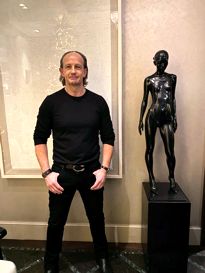
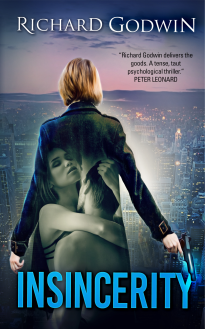
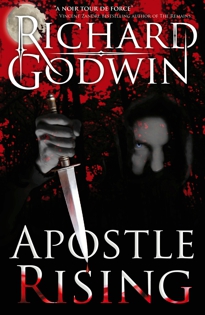
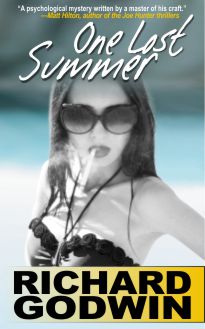
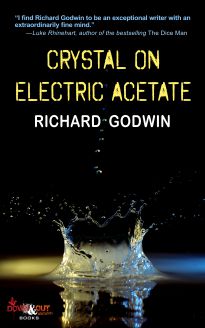
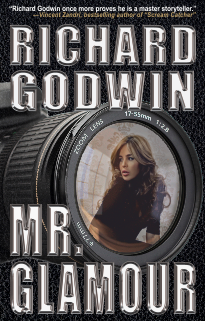
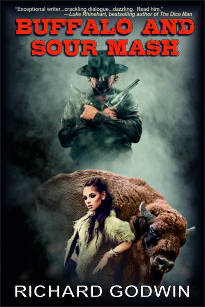
30 Responses to Chin Wag At The Slaughterhouse: Interview With Kristin Fouquet